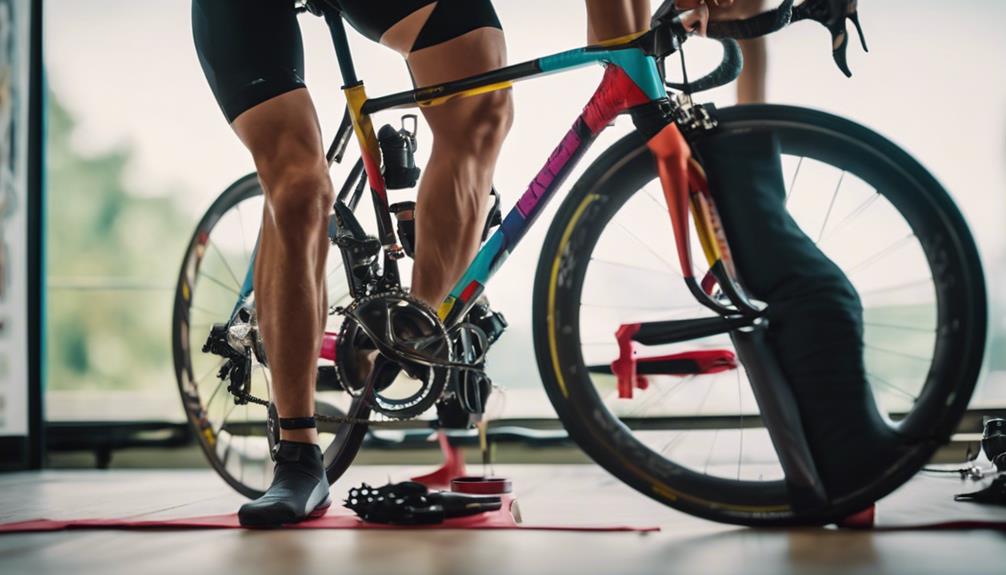When it comes to cycling, speed is a primary factor that many enthusiasts consider. Whether you’re a competitive racer or a casual rider, understanding the nuances of bicycle speed can significantly enhance your cycling experience. In this article, we will explore the question, “What bicycle is the fastest?” by examining various types of bicycles, their design features, and how they contribute to speed. From racing bikes to time trial machines, we will delve deep into the world of fast bicycles to help you find the ideal ride for your quest for speed.
The Science of Speed: How Bicycle Design Affects Performance
To answer the question, “What bicycle is the fastest?” we must first understand the science behind bicycle design. The frame material, geometry, and aerodynamics play crucial roles in determining how fast a bicycle can go. Lightweight materials such as carbon fiber or high-grade aluminum provide a significant advantage in terms of speed. Furthermore, a bicycle’s geometry—specifically the angles and lengths of its components—affects how efficiently a rider can transfer power to the pedals. Aerodynamic features like streamlined frames and narrow tires reduce drag, allowing cyclists to reach greater speeds with less effort.
Road Bikes: The Speed Champions of the Cycling World
When discussing the fastest bicycles, road bikes are often at the forefront. Designed specifically for speed and efficiency on paved roads, road bikes typically feature lightweight frames, thin tires, and drop handlebars. These design elements work together to minimize wind resistance and maximize the power transfer from the rider to the wheels. Many professional cyclists rely on high-performance road bikes from renowned brands like Specialized, Trek, and Cannondale to achieve top speeds in competitions. For those serious about speed, investing in a quality road bike is a step toward achieving that elusive title of the fastest bicycle.
Time Trial Bikes: Engineered for Ultimate Speed
If you’re looking for the pinnacle of speed in cycling, time trial bikes are the answer. These specialized bicycles are designed for individual racing against the clock, featuring unique aerodynamic designs that prioritize speed above all else. With features such as aero handlebars, deep-section wheels, and a geometry that positions the rider in a flat, aerodynamic posture, time trial bikes can achieve incredible speeds. Riders competing in events like triathlons or time trials often choose these bikes to gain every possible advantage in their quest for speed. Brands like Cervélo and Felt offer top-of-the-line time trial bikes that are built for performance.
Mountain Bikes: Speed on Varied Terrain
While mountain bikes are not traditionally viewed as speed machines, advancements in design have led to some models that can compete on speed as well. Mountain bikes are built to handle rough terrains, featuring wider tires and suspension systems that absorb shocks. However, the latest innovations in cross-country mountain bikes have resulted in lightweight options that still offer some aerodynamic features. These bikes can achieve impressive speeds on trails, making them a versatile choice for riders who enjoy both speed and off-road experiences. Brands like Santa Cruz and Trek have developed mountain bikes that can be surprisingly fast on the right terrain.
Hybrid Bikes: Balancing Speed and Comfort
Hybrid bikes can also be considered when discussing the fastest bicycles, as they combine features from road and mountain bikes. These bikes typically have a more upright riding position, wider tires for stability, and are designed for versatility across various terrains. While they may not reach the same top speeds as dedicated road or time trial bikes, hybrids offer a balance between comfort and speed, making them suitable for casual riders who prioritize endurance over outright speed. Brands like Giant and Specialized provide excellent options for those looking for a fast yet comfortable ride.
Electric Bikes: The New Speed Frontier
In recent years, electric bikes, or e-bikes, have surged in popularity, raising the question of whether they can be considered among the fastest bicycles. Equipped with a motor that assists with pedaling, e-bikes allow riders to maintain higher speeds with less effort. While they have speed limits enforced by law (often around 28 mph), the combination of human power and electric assistance means that riders can achieve faster speeds than they might on a traditional bike. With brands like Rad Power Bikes and Trek leading the charge, e-bikes are becoming a popular choice for those looking to conquer speed without sacrificing energy.
Factors Affecting Bicycle Speed: More Than Just the Bike
While the type of bicycle plays a significant role in determining speed, several other factors contribute to a cyclist’s overall performance. Rider fitness, technique, terrain, and weather conditions can all affect how fast a bicycle can go. A well-trained cyclist using an efficient pedaling technique will naturally achieve higher speeds than a novice rider, regardless of the bike’s capabilities. Additionally, factors such as tire pressure, gear selection, and wind resistance must be considered. Therefore, understanding what bicycle is the fastest is just one piece of the puzzle; riders must also focus on their performance and conditions to maximize speed.
Conclusion: Finding Your Fastest Bicycle
In conclusion, the question, “What bicycle is the fastest?” is multifaceted and depends on various factors, including the type of riding you plan to do and your personal preferences. Road bikes and time trial bikes are generally the fastest options for competitive cyclists, while mountain bikes and hybrids offer versatility and comfort. E-bikes introduce a new level of speed possibilities, catering to those seeking a blend of convenience and performance. Ultimately, the best approach to finding the fastest bicycle is to consider your specific needs, test various models, and invest in a bike that suits your riding style. With the right bicycle and a commitment to improving your skills, you’ll be well on your way to achieving your cycling speed goals.
